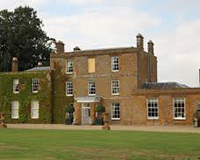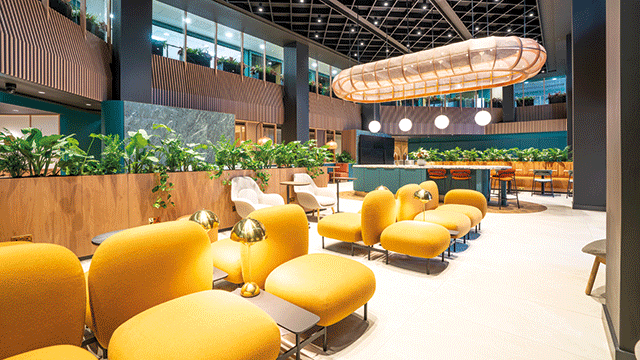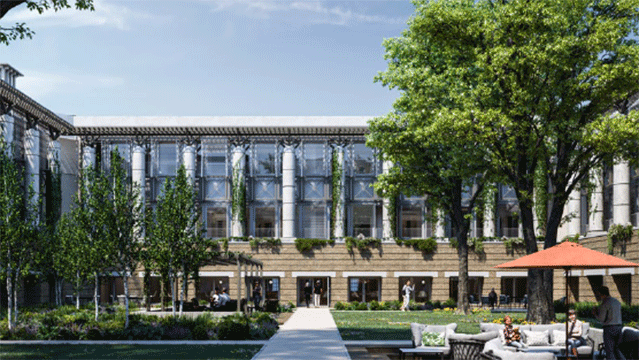Stately homes can’t match the demand for super-prime property in central London, but there are still ways for buyers – often from overseas – to get full value from a country pile
Owning a vast country pile was once considered the ultimate status symbol. And it defined the aristocracy, whose wealth was generated by the land they owned.
Earlier this year, however, online retail outfit Quidco published a list of modern status symbols. The swanky central London pad was there, as was the yacht and the Italian sports car. But the country estate was nowhere to be seen.
The contrast between rural super-prime and the equivalent sector in London is stark. The sheer weight of money, the insatiable demand from all corners of the earth and the chronic lack of supply has led to the prime London resi market rising by 7.8% over the first five months of the year, according to Knight Frank.
Last year, research from Savills found that £7bn was spent on ?high-end London homes. Of that, just 20% came from UK citizens.
Prices for prime country houses in England have not, on the face of it, done too badly either. In the first half of 2014, such properties experienced their strongest rate of annual growth since 2010, rising by 5.2%. Added to that, the volume of prime country sales for the second quarter was 11% higher than the corresponding period last year, says Knight Frank residential research partner Oliver Knight.
But within that generally positive picture are some degrees of difference. Most of the growth is for homes valued at between £500,000 and £1m.
Average values of prime properties with a price tag south of £2m rose by just 1.3% between April and June. But the price of houses worth more than £2m grew by just 0.6%.
What about prices for super-prime homes and estates – those worth over £5m? They have actually fallen in value by 2.3% (see below).
A slight glitch on Strutt & Parker’s website (since fixed) offered an intriguing insight into the gap between London super-prime and the super-prime offered by the rest of the nation. While gazing at a screen filled with country estates – sweeping vistas, a clutch of buildings, a score of bedrooms, plus teeming streams and deer-filled woods – something slightly different pops up: details for a one-bedroom leasehold flat at One Hyde Park, the Candy brothers’ super-duper-prime London apartment block at 100 Knightsbridge. The flat, all 1,026 sq ft of it, is yours for just £6.6m.
For roughly the same price, you could bag yourself Nether Worton House, a 10-bedroom, three-storey pile amounting to more than 10,000 sq ft and nestled in 19 acres of parkland (with moat). Or, indeed, Porters End House near Harpenden: just 27 miles from One Hyde Park, its seven bedrooms, stables and tack rooms are tastefully arranged over 24 acres or so.
Further afield, you could plump for Caverswall Castle, near Stoke-on-Trent, a 20-acre estate with more than 1,000 years of history, as well as 18 bedrooms. Admittedly, it is a bit far from the West End, but it is on the market for just £3m.
Further afield still, you could have bought the Auch & Invermearan estate, a 28,300-acre slice of Scotland, for just £11m – the same price as a two-bedroom garden flat at One Hyde Park.
“The large price discrepancy between the prime country and prime London market has created an opportunity for buyers, especially those relocating from London,” says Knight. “Londoners can invest in a larger property or buy additional land.
“As the economy continues to recover and house prices outside London show growth, we expect more London buyers will look to move.”
But there is a good reason for these properties coming at a (comparatively) reasonable price. Maintaining a large estate is, of course, not quite as easy as maintaining a super-prime London flat.
Most are old, some ancient, and so require renovation, modernisation and occasional restoration. Many are listed, with all the associated headaches. And then you have the properties’ sheer size to contend with.
“Keeping the grounds in tip-top shape is vital,” says Alexander Harston, senior negotiator at Hamptons International’s country house department. “This, in turn, requires a team of groundsmen and specialists to ensure the smooth running of an estate.”
For some, the costs are just too onerous. Caverswall Castle, for instance, came to market because the previous owner, who ran it as a wedding venue, went bust.
Most time-consuming and costly to run are the sporting estates and vast swathes of farmland, or forest with a castle, manor or even a privately owned village nestled within its folding hills.
The costs don’t stop once you have trimmed the thousand acres of lawn and paid the extortionate heating bill. “Breeding birds or buying them in and maintaining a river are just some of the natural costs surrounding these traditional sports,” Harston adds. “Naturally, this can turn away those concerned about the practicalities of running such a large-scale operation.”
However, despite the pressure on values and the onerous costs and taxes, these large estates are still selling. And for sizeable sums too, not far shy of their 2007 peak.
While the costs may scare off sensible Brits, there is something about a British sporting estate that has a unique appeal to a certain type of international investor (see below).
But not all the interest is coming from overseas. The Auch & Invermearan estate was bought by an unnamed UK resident. Indeed, Knight Frank’s research shows domestic buyers are the dominant movers in prime rural residential, followed by the US, Russia and India.
At the higher, super-prime and sporting estate end, UK buyers still make up a large part of the market, says Harston. “Particularly London-based high-net-worth professionals who have an estate for entertaining at the weekend.”
There is one thing a huge country estate offers that you are unlikely to get from a pricey London flat: income.
Alongside prime London residential, one other sector has recorded enviable growth over the first half of 2014. Average capital growth for prime farmland across the UK was 9.8%. Compare that with prime London residential at 7.8% and suddenly that estate looks a little more tempting.
Also, there is more gold in them thar hills. Like many others, the Auch & Invermearan estate is very much a working estate, still run with the aim of generating a sizeable income for its laird. It could, however, become even more profitable for its new owner because of the potential to harness its green energy.
Currently there is just one hydro-electric plant on the estate, providing an income of nearly £250,000. But the estate has planning consent for three more and the potential for a further 12.
Perhaps the secret to unlocking the real value of these majestic assets is not the stately home or the country pursuits, but by harnessing the very resource they were first built to exploit – the land.
The urban-rural divide
Research from Savills shows that there is not just a value divide between London and the rest, but there is also a gap between urban and rural.
“Across the country, buyers continue to favour urban locations,” says Lucian Cook, Savills’ director of resi research.
The value of prime properties in regional cities grew by 1.7% in the three months to the end of June, with annual growth totalling 8.1%, driven in part by downsizers and families.
But while prime cities now average just 1.7% below the peak values of 2007, prime rural properties are 13.5% below where they once stood, says Savills.
Knight Frank, cutting its stats a little differently, goes even further, stating that prime rural properties are 18% below peak values.
Scotland the brave
In July, an unnamed British buyer shelled out £11m for one of Scotland’s largest estates. The 28,300-acre Auch & Invermearan estate in Argyll and Perthshire, which costs about the same as a prime London four-bedroom house, includes a six-bedroom lodge, seven cottages and a flock of 8,200 Scottish blackface sheep.
The successful sale of the estate, by Gloucestershire farming family the Bestermans, seems to put paid to fears that Scottish estate sales would be stymied by the prospect of independence following this month’s referendum.
But the anxiety is still there, says John Coleman, head of agency in Scotland for Smiths Gore. “Foreign interest is still strong for estates in Scotland, but with the referendum so close, few are keen to commit until the result is known,” he says. “There is also very little supply of new estates, for the same reason.”
Alongside this, Coleman adds, the recommendations of the Land Reform Group could shake up land ownership north of the border, whether independence happens or not.
Nevertheless, total sales volumes in Scotland were more than 20% higher at the end of Q1 2014 than in Q1 2013.
“Despite the hype over independence, there is a real appetite for Scottish land holdings from investors, especially from overseas,” says Ran Morgan, head of Knight Frank Scotland.
The £2m-plus problem
The higher the price tag, the less attractive a country house appears to be. In the first half of the year, prices for country piles worth more than £2m were up just 0.6%, according to Knight Frank.
Meanwhile, prices for estates worth more than £5m actually fell in value by 2.3% during the second quarter.
One possible deterrent to people looking for a £2m-plus mansion is the higher 7% stamp duty charge, says Knight Frank’s Oliver Knight. The higher rate, introduced in March 2012, means that if you were to buy Nether Worton House, say, for £6.75m, you would have to part with nearly £500,000 in duty.
After the introduction of the 7% rate, sales of properties above the threshold in England and Wales, excluding London, fell by 28%.
“The market above £2m remains more fragile, with the price threshold that resulted from stamp duty increases remaining entrenched,” says Savills’ Lucian Cook.
Added to this is the uncertainty over whether a “mansion tax” on homes valued at more than £2m will be introduced. Although it has been turned down by the Conservatives, the Liberal Democrats are still committed to the policy and Labour has yet to reveal its position.
An overseas obsession
For years, country estates have been targeted by ultra-high-net-worth owners from mainland Europe and the Middle East, as well as Americans. Now other nationalities seem to be attracted. “It certainly seems like there is growing activity from other countries and continents, such as certain South American countries, Russia and former Soviet countries, China and India,” says Savills’ Lucian Cook.
“Few have committed yet, but it would seem that as their children become ?more westernised via our education system, it will only be a matter of time before they start buying. Many have bought the London residence and the Wentworth house; the country estate ?may be next.”
To many people across the world, a vast mansion in the British countryside is still very much a status symbol.
“The majority of overseas buyers tend to focus their attention on smaller landed estates, usually 50 to 100 acres, with trophy equestrian facilities that don’t require as much upkeep,” says Alexander Harston of Hamptons International. “The Chinese and Russian market, in particular, would have the security and privacy offered by acres of land, but their requirements are more about finding a high-specification residential home than anything else.”
For others, the costs are irrelevant. ”With many of our high-net-worth foreign clients, the acquisition of this asset is the fulfilment of a dream to own and manage their own sporting estate,” says Luke Callaghan, senior associate in the private client team at international law firm Taylor Wessing.
Callaghan argues that the passion ?such people have for country pursuits ?will far outweigh any concerns about the cost of day-to-day management of the estate.
“In any event, provided it is properly and efficiently managed by a professional land agent, a sporting estate can be both profitable and a relatively trouble-free investment for the owner,” he says.
Hunting, shooting and fishing are all indigenous pastimes in parts of western Europe, says Harston. For this reason, buyers of country estates tend to be from France, the Netherlands, Holland, Scandinavia and Switzerland,” he adds.
Because these countries have a rich sporting heritage, most of the buyers are experienced enough to know what such an estate entails, says Callaghan. “They are privy to the level of finances required to maintain a large estate.”











